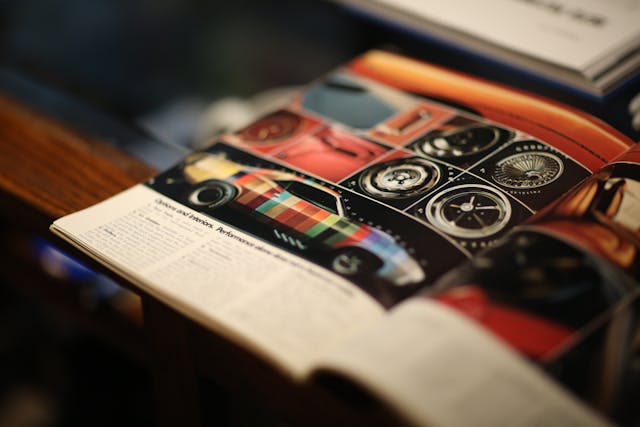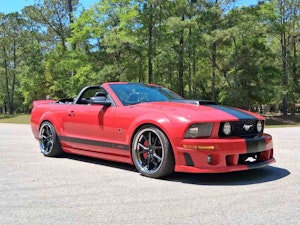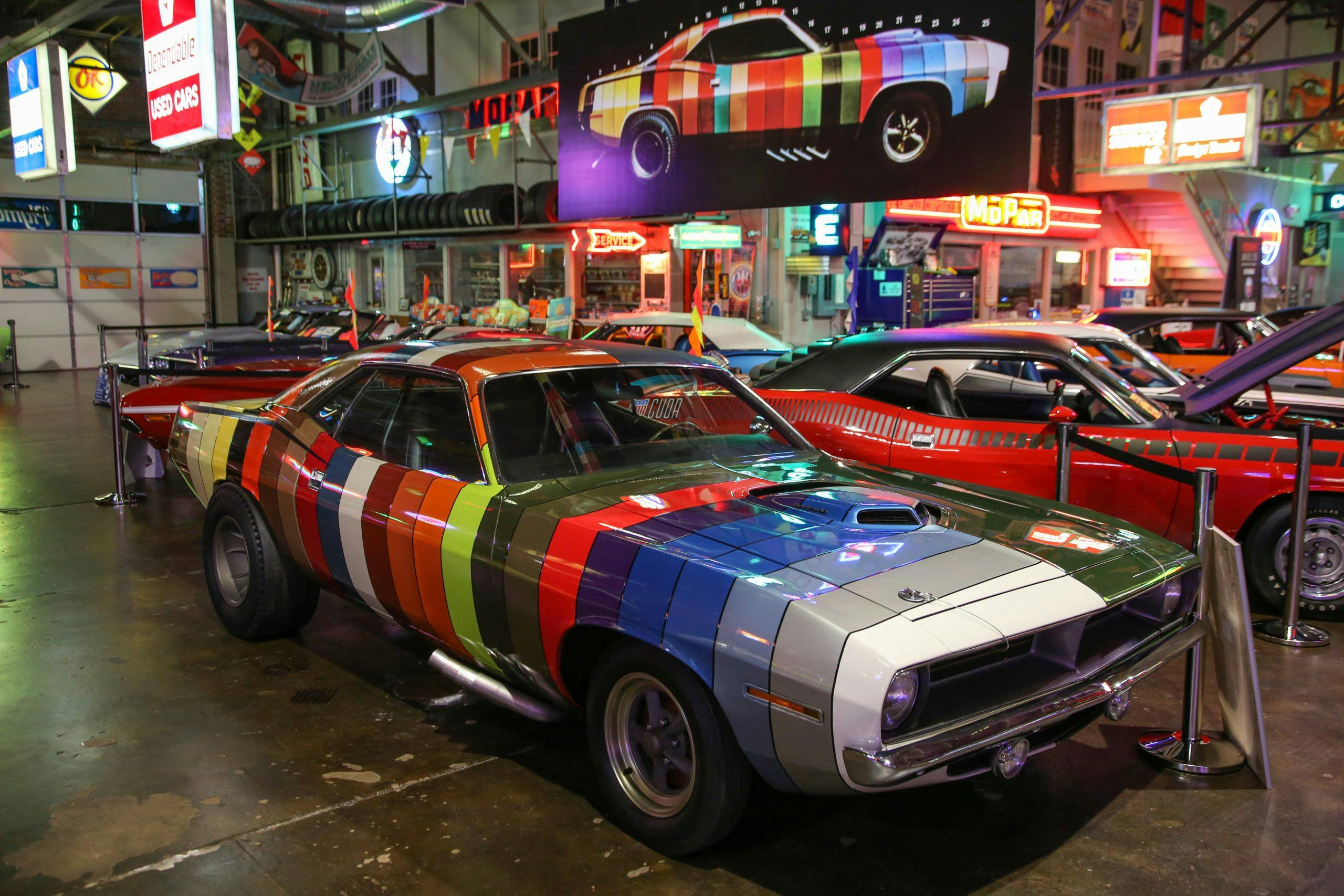Media | Articles
How one man made a Mopar ad real
Color is basically dead in modern motoring. We went from the Model T’s “any color… so long as it’s black” to a ’60s Pantone catalog of hues, and now the pendulum has swung back. Fifty Shades of Grey might as well be a sign outside your local Audi dealer.
Manufacturers have tightened up available paint choices because dealers like to stock units that can move quickly. It’s relatively easy to persuade an impatient shopper into a crossover painted “Magnetite,” even if that person showed up on the lot wanting a dark blue. Or at least it used to be easy, in the days before the chip shortage shriveled dealer stocks and upended the industry. Maybe, if we’re lucky, the silver lining of current supply restrictions will be a return to more vibrant parking lots.
Either way, we probably won’t see again the sort of market variety that which produced the Paint Chip ’Cuda. In 1970, a picture of this brilliant Mopar invited potential customers to taste the rainbow. The car appeared in a brochure for Plymouth options, its body covered in no fewer than 25 shades of factory paint. Along with accessories like pistol-grip shifters, tachometers, and a ram-air intake (“it shakes and quivers with every lope of the cam, Rumpa-rumpa-rumpa…”) the car’s profile shot was a clever way to show how Plymouth had the competition beat for variety. “Performance alone does not a supercar make,” the copy boasted.

It should be noted that modern-day Dodge still offers a reasonably broad color palette. However, the current Challenger makes do with fourteen shades, and that range can’t match the vibrancy of, say, a Lime Light (FJ5). It was 1970, you were on your way to see Three Dog Night rock the Milwaukee Auditorium, and your Barracuda’s paint job was as loud as its quad zoomie exhausts.
There’s only one issue with this Technicolor nostalgia bomb: It never existed. Plymouth’s brochure was clever advertising, but the copy was merely ink-deep. The amount of work required to actually paint a car in 25 different shades wasn’t worth the payoff, and so the image in that ad was fake, an illustration.
Marketplace
Buy and sell classics with confidence
Such is the nature of the midcentury muscle-car golden age, a time shorter and perhaps less magical than everyone remembers. However, for the kids who grew up watching these cars go door-to-door at stop lights, the hero worship never went away. For collector Tim Wellborn, an obsession with all things Mopar would eventually lead not only to a wide collection of special cars, but also to a three-dimensional realization of 1970s advertising genius.

Wellborn shared an interest in Dodges with his father, stretching back to the 1971 Charger R/T 426 Hemi that the latter man bought new. That car is still in the family, part of Alabama’s Wellborn Musclecar Museum, a collection of 1969 through 1971 American performance machines. Housed in a refurbished 1940s Buick dealership in Alexander City, the Wellborn boasts the world’s largest collection of 1971 Dodge Chargers, along with several high-performance variants of Chevrolet Chevelles and Ford Mustangs, and rarities like a Pontiac GTO IV Judge convertible.
Amassing the collection took patience, but assembling the Paint Chip ’Cuda took creativity. The donor car, a 1970 Barracuda in Ivy Green, came from New Orleans. The car had been sitting for two decades, but it was in solid, original condition. There was a 383 under the hood, and a four-speed manual behind that. In fact, the car’s condition was good enough to present further challenge—Wellborn decided that its history was worth preserving. A blank vinyl wrap was carefully applied to the car’s right half, and the shell was modified to match the Plymouth ad without interfering with the original sheetmetal. Twenty-five lines of paint were individually laid down atop the vinyl skin. The work was done by a New Orleans restoration shop called The Bomb Factory, and the project was completed in 2016.

With its asymmetric appearance, right down to the single, right-side rear drag slick, the ’Cuda comes off as Dr. Jekyll and Mr. Hi-def. It also serves as a striking reminder that choice and personalization were once a core part of the car industry.

You can’t go back to the past, but you can take a good hard look over your shoulder and decide what parts of it are worth keeping. When the chip shortage eventually eases, the industry will return to business as usual and monochrome dealer lots. But it doesn’t have to. Futurists can argue that enthusiast favorites like the manual transmission are evolutionary dead-ends, victims of changing tastes and advancing tech. But colors have always moved us. It took 46 years for the Paint Chip ’Cuda to exist in the flesh; when you order your next car, maybe it’s worth waiting a few weeks for the color you really want.


















The multi-coloured Barracuda “Technicolor nostalgia bomb” as you put it did not exist for 1970, but it did for 1965. Chrysler painted a ’65 17 different colours for show.
Old article popping up again. It’s cool how the owner made it match the ad. I bet it was far too much work for a normal person to do.
Maybe somebody can post the actual paint color chart – I have two of those colors that I need to check on! The color is either $10 or #14 according to the ad….